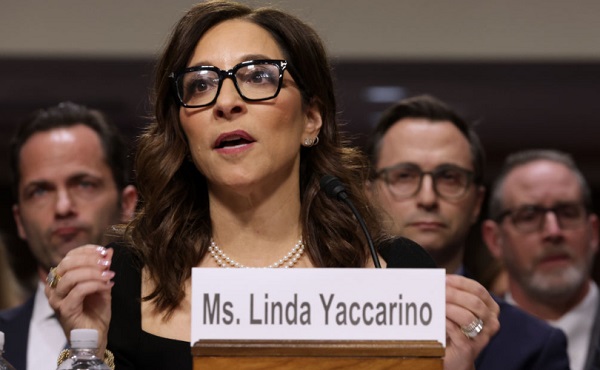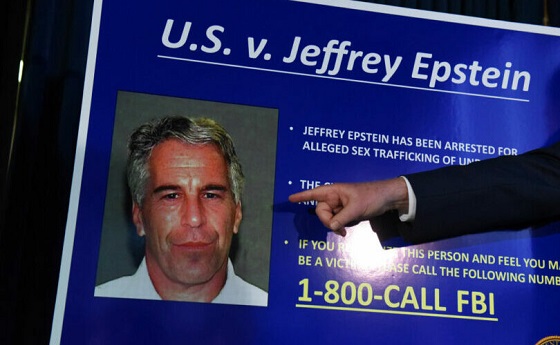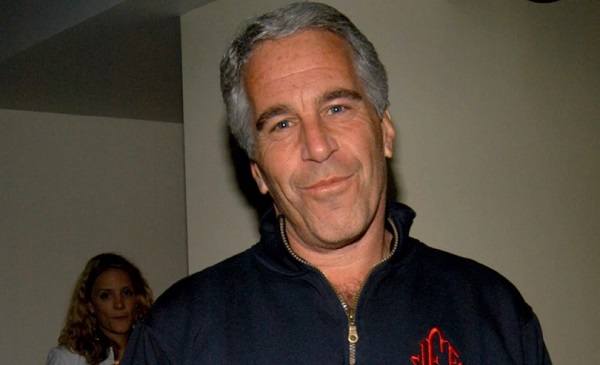Alberta
Premier Kenney escalates Alberta’s response to Amnesty International with a new scathing barrage
From the Province of Alberta
Amnesty International: Statement from Premier Kenney
Premier Jason Kenney has sent the following letter to Alex Neve, secretary general of Amnesty International Canada:
“Dear Mr. Neve,
“Before responding to your open letter, titled “Human rights concerns regarding the Government of Alberta’s “Fight Back Strategy,” I would like to offer a note of sympathy. Honestly, it can’t be easy being the long-time head of Amnesty International Canada (AI), stuck in annoyingly free and peaceful Canada, having to work yourself up into high dudgeon to denounce a democratically-elected government peacefully standing up for its citizens.
“On the other hand, your insistence that the burning human rights threat in Canada right now is – to use your description – the “establishment of an energy ‘war room’ devoted to defending the oil and gas industry in Alberta and a public inquiry into the foreign funding of groups who oppose or criticize energy developments in the province” can hardly pass unchallenged. Relentless misinformed attacks against our oil and gas industry have cost us thousands of jobs and hurt families from every region of our province. The cost in investment and jobs has been incalculable. Our government won the largest democratic mandate in Alberta history in part on a promise to stand up to those attacks. I will not apologize for keeping that promise.
“Again, I understand it must be hard for you. When you look around the world and see the rise of authoritarian governments, civil war, human trafficking, genocide, and other gross violations of human rights, it must be a tall order to find something, anything to denounce here in our gelid but placid Dominion.
“You see your colleagues in the Kingdom of Saudi Arabia standing up to a government that “severely restrict[s] the rights to freedom of expression, association and assembly” and “extrajudicially executed” and dismembered a prominent journalist (those are all quotes from the AI country profile).
“You see your counterparts in the Bolivarian Republic of Venezuela facing a regime under which “hundreds of people were arbitrarily detained” amid “reports of torture and other ill-treatment, including sexual violence against demonstrators” and “the Attorney General was dismissed under irregular circumstances.” (That last part rings a bell – you might want to look into it.)
“You see your confrères in Russia fighting “further restrictions to the rights to freedom of expression, association and peaceful assembly,” “harassment and persecution” of religious minorities, “torture,” and a regime that systematically sabotages Western democracy, while your greatest challenge is … a provincial government speaking out in defence of its economy and in defiance of an active campaign against it.
“This is a double pity. It can’t be much fun for you and, more seriously, it undermines the credibility of what was once, and still could be, an important organization. As I have written before, when I joined Amnesty International as a teenager it was to defend the rights of political dissidents like Andrei Sakharov and to oppose totalitarian regimes like those currently in charge in most major oil-producing countries. I am disappointed to see that you continue to squander the moral authority accrued in those brave campaigns on smearing the most responsible and rights respecting major oil-producer in the world.
“There was a reason I singled Russia, Saudi Arabia, and Venezuela for comparison. They – along with Iran – would be major beneficiaries of a moratorium on Canadian oil production. No one will cheer your letter harder than Vladimir Putin, the Houses of Saud and Al Thani, the caudillo Nicolás Maduro, and Ayatollah Ali Khamenei. OPEC’s oleo-gopolists will be chuckling from their gilded palaces at your naïveté.
“Demand for oil is not going away soon. Every credible estimate shows several more decades of strong oil demand, and the world is going to get it from somewhere. Shutting down Alberta’s oil industry means more global supply – including much of the oil imported to Canada’s east coast – will be sourced from the world’s worst human rights abusers, instead of from the most ethical and best-regulated industry in one of the freest countries in the world. The net result of the campaign to landlock Canada’s oil and gas reserves, in which (to use an old but apt term) you are playing the role of useful idiot, will be to take money out of the pockets of Alberta workers to line the silk pockets of men who commit enough human rights abuses before breakfast to keep Amnesty International busy for a year. If you are truly concerned about human rights, look at where the world’s oil will come from if we don’t export it from Canada.
“Although your letter is repetitive and scattershot in its criticisms, I will respond to your main points in turn. Not because you raise serious issues, but because your hyperbolic bill of particulars is all-too typical of critics of Alberta’s oil and gas industry. It demands a rejoinder in the interest not just of our province, but of accuracy. Ironically, your letter is a perfect illustration of just why Alberta needs a way to respond to common misconceptions – and the decade-long campaign to discredit the Canadian oil and gas industry – with facts.
“For example, you allege that our plan to correct inaccuracies about Alberta’s oil and gas industry will “have particularly serious implications for advancing reconciliation with Indigenous peoples in the province.” What out-of-touch balderdash. In fact, I received your letter while I was meeting with the leaders of northern Alberta First Nations, whose people have enjoyed prosperity precisely because of their partnerships with Alberta oilsands producers and who strongly support our government’s efforts to respond to the campaign to landlock Canadian energy.
“Shortly after I was sworn in as Premier, I hosted the first Government-First Nations gathering in years, which was attended by 46 of the 48 Alberta First Nations Chiefs. The overwhelming – I would say, unanimous – consensus was that Alberta’s First Nations want to be partners in the prosperity that flows from the responsible development of our shared natural resources. They have seen first-hand that Alberta has Canada’s highest level of Indigenous employment because of our energy sector, and especially our oilsands. And they have had enough of foreign and urban do-gooders telling them how they should steward their traditional lands – a phenomenon BC MLA and former chief councillor of the Haisla Nation, Ellis Ross, and others acidly refer to as “eco-colonialism.”
“That is why we proposed unprecedented steps to partner with First Nations in defense of our shared economic interests through the Alberta Indigenous Opportunities Corporation (AIOC). This $1 billion commitment, backed with the full faith and credit of the Alberta government, will encourage First Nations participation in resource development. The AIOC will be a first-of-its kind policy, a creative solution to the challenges that many resource-rich but capital-poor First Nations face in owning or co-owning major oil and gas projects. We have heard from dozens of First Nations inside and outside Alberta who are eager to access this support, and the federal government has expressed an interest in becoming a financing partner.
“We have also launched a $10 million Indigenous Litigation Fund to help First Nations defend their own economic development rights in court when they are threatened by government actions like the West Coast tanker ban or the cancellation of the Northern Gateway pipeline – both decisions taken by the federal government without consultation and over the strong objection of many B.C. and Alberta First Nations.
“You may be surprised to hear that I agree that “Reconciliation with Indigenous peoples is a Legal and Moral Imperative.” I use the same language myself, calling the need to partner with our First Nations, the first custodians of our rich trove of resources, a “moral imperative.” We know that there are still too many Indigenous people in Canada who do not enjoy the prosperity that natural resources development has brought. In that spirit, I hope that you will join me in cheering the fact that there are at least four consortia of First Nations bidding for a major stake in the Trans Mountain pipeline. Projects like this represent real economic opportunity for Canada and our First Nations and are a step towards meaningful reconciliation of which we should all be proud.
“Separately, I appreciate your concern for vulnerable individuals who you worry will be harmed by government advocacy. I am pleased be able to reassure you that you fundamentally misunderstand the context and purpose of the “fight back” strategy. In fact, I am sure you’ll be relieved to know that you have it exactly backwards: our energy industry and the jobs across Alberta and Canada that depend on it are not threatened by isolated or vulnerable individuals but by well-funded family foundations like the Rockefeller Brothers Fund, the David and Lucile Packard Foundation, and hedge fund billionaire Tom Steyer, whose fortune was made in part from coal mines.
“Those would be the Rockefellers whose fortune was made by the Standard Oil monopoly and the Packards of Hewlett-Packard fame, whose foundation has assets over US$7.5 billion and who recently rewarded Tzeporah Berman, a former advisor with the previous government, with a US$2 million prize for her anti-oilsands activism. When I joined Amnesty International, it was because you fought for prisoners of conscience in dictatorial regimes. Today, you are fighting on the side of foreign billionaires trying to shut down an industry on which hundreds of thousands of hard-working men and women depend. Forgive me if I express a concern of my own: that Amnesty International may have drifted somewhat from its core mission.
“As for your concerns about freedom of expression and association, those rights are not threatened by our government telling the truth about our energy industry. Our intent is to counter misinformation, exaggerations, and outdated information with facts and evidence. You acknowledge this when you say that the “narrative that has accompanied the launch of the ‘war room’ focuses on ‘uncovering the truth’ and ‘tackling misinformation.’” That’s exactly right.
“There is a great story to tell about Alberta’s oil and gas sector. It’s a story of innovation, of world-leading research and development, of decreasing emissions, of cleaner technology. Most importantly, it is the story of an industry that has been an engine of social progress for people of all education levels from across the country, including women, new Canadians, and Indigenous peoples. How you can twist this good news story into a threat to human rights confounds comprehension.
“Speaking of exaggerations, your claim that “by any measure, oilsands development in Alberta is a major source of global carbon emissions” is exactly the sort of distortion that makes this project necessary. Canada is responsible for 1.6% of global GHG emissions and the oilsands account for 8% of that, or about one tenth of one percent of global emissions. Your claim would be wildly inaccurate even if the oilsands were ten times their current size. This is not to diminish the importance of Alberta showing leadership in GHG reductions. Our government is committed to lowering emissions, including by putting a price on large emitters and funding technology that will lower emissions both here and around the world.
“The second part of that plan is particularly important. While we will reduce emissions here in Alberta, our greatest contribution to the global challenge of climate change will be come from developing and exporting new technology and our cleaner natural resources, especially natural gas, to displace the coal-fired electricity in the world’s largest and dirtiest emitters. The reduction in global emissions we can achieve by exporting our know-how and resources to the developing world dwarf any reductions the anti-oilsands campaign could ever hope to achieve. Contrary to your letter, we may not be a big part of the problem, but we are determined to be a big part of the solution.
“As for the rest of your accusations and insinuations, they only make sense if you deny that there is a well-funded campaign against Alberta’s natural resource industry and a concomitant need to rebut it. This would be the campaign that you dismiss as “vague conspiracy theories about the hidden goals of US based foundations.” I assure that if their goals are hidden it is because they have worked hard to keep them that way. One of the original strategy documents of the Tar Sands Campaign, from 2008, actually stressed that “the [Tar Sands Campaign] Coordination Centre shall remain invisible to the outside” (their emphasis). Unfortunately, the Tar Sands campaign is real and anything but vague. Under the heading “Tar Sands Campaign Strategy 2.1,” that same document lays out step-by-step, in precise detail, the “tar sands termination agenda” to “embarrass Canada” and “delegitimize” the oilsands.
“As if that weren’t enough, the North American energy industry is also being targeted by a sophisticated social media and cyber campaign funded and coordinated by Putin’s Russian government. A 2018 report from the U.S. House Committee on Science, Space and Technology concluded that “Russia exploited American social media as part of its concerted effort … to influence domestic energy policy” and specifically “targeted pipelines, fossil fuels [and] climate change.” It’s a coalition of the bleeding-hearted and the bloody-minded.
“This is the threat Alberta has faced for more than a decade. It is an existential threat to our economy backed by American billionaires and coordinated through dozens of foreign and Canadian environmental organizations and advocacy groups. Their success can be measured in tens of billions of dollars in lost investment and thousands of lost jobs. That is why in the recent election we told Albertans that “We will fight back against the foreign funded special interests who are trying to landlock our energy.” Having received an historic popular majority, we intend to keep our word.
“Albertans deserve a government that will not roll over in the face of foreign-funded special interests. Our commitment to stand up for Alberta is the furthest thing from a threat to human rights; it is a pledge to meet myth with fact and misinformation with evidence. If Amnesty International Canada really cannot see the difference, then I am sorry – the organization I joined as a teenager had a clearer sense of purpose and a better moral compass.”
Alberta
Alberta school boards required to meet new standards for school library materials with regard to sexual content

Alberta’s government has introduced new standards to ensure school library materials are age-appropriate.
School libraries should be safe and supportive places where students can learn and explore without being exposed to inappropriate sexual content. However, in the absence of a consistent standard for selecting age-appropriate library materials, school boards have taken different approaches, leading to concerns about safeguards in place.
In response to these concerns, and informed by feedback from education partners and the public, Alberta’s government has created standards to provide school boards with clear direction on the selection, availability and access to school library materials, such as books.
“Our actions to ensure that materials in school libraries don’t expose children to sexual content were never about banning books. These new standards are to ensure that school boards have clear guidance to ensure age-appropriate access to school library materials, while reflecting the values and priorities of Albertans.”
The new standards set clear expectations for school library materials with regard to sexual content and require school boards to implement policies to support these standards.
Standards for school library materials
Under the new standards, school libraries are not permitted to include library materials containing explicit sexual content. Non-explicit sexual content may be accessible to students in Grade 10 and above, provided it is age-appropriate.
“Protecting kids from explicit content is common sense. LGBTQ youth, like all children, deserve to see themselves in stories that are age-appropriate, supportive and affirming – not in material that sexualizes or confuses them.”
School boards must also regularly review their school library collections, publish a full list of available materials and ensure that a staff member supervises students’ access to school library materials. School boards will have to remove any materials with explicit sexual content from their school libraries by October 1.
School board policies and procedures
All school boards must have publicly available policies that align with the new standards for selecting and managing library materials by January 1, 2026. School boards can either create new policies or update existing ones to meet these requirements.
These policies must outline how school library materials are selected and reviewed, how staff supervise students’ access throughout the school day, and how a student, parent, school board employee or other member of the school community can request a review or removal of materials in the school library. School boards are also required to clearly communicate these policies to employees, students and parents before January 2026.
“A robust, grade- and age-appropriate library catalogue is vital for student success. We welcome the ministry’s initiative to establish consistent standards and appreciate the ongoing consultation to help craft a plan that will serve our families and communities well.”
“Red Deer Public Schools welcomes the new provincial standards for school library materials. Our division is committed to maintaining welcoming, respectful learning spaces where students can grow and thrive. Under the new standards for school libraries, we remain dedicated to providing learning resources that reflect our values and support student success.”
Quick facts
- The new standards will apply to public, separate, francophone, charter and independent schools.
- The ministerial order does not apply to municipal libraries located within schools or materials selected for use by teachers as learning and teaching resources.
- From May 26 to June 6, almost 80,000 people completed an online survey to provide feedback on the creation of consistent standards to ensure the age-appropriateness of materials available to students in school libraries.
Related information
- Ministerial Order
- School library standards engagement
- Reference Materials: Content warning: this document contains graphic content that may be disturbing to viewers and is not appropriate for young viewers. Viewer discretion is advised.
Alberta
Fourteen regional advisory councils will shape health care planning and delivery in Alberta

Regional health councils give Albertans a voice
Albertans want a health care system that reflects where they live and adapts to the unique needs of their communities. As part of the province’s health care refocus, Alberta’s government committed to strengthening community voices by providing more opportunities for Albertans to bring forward their local priorities and offer input on how to improve the system.
The regional advisory councils, made up of 150 members from 71 communities, will advise Alberta’s four health ministries and the newly refocused health agencies: Primary Care Alberta, Acute Care Alberta, Assisted Living Alberta and Recovery Alberta. Each council will explore solutions to local challenges and identify opportunities for the health system to better support community decision-making.
“By hearing first-hand community feedback directly, we can build a system that is more responsive, more inclusive and ultimately more effective for everyone. I am looking forward to hearing the councils’ insights, perspectives and solutions to improve health care in all corners of our province.”
“Regional advisory councils will strengthen acute care by giving communities a direct voice. Their insights will help us address local needs, improve patient outcomes and ensure timely access to hospital services.”
“A ‘one-size-fits-all’ approach does not address unique regional needs when it comes to mental health and addiction challenges. These councils will help us hear directly from communities, allowing us to tailor supports and services to meet the needs of Albertans where they are.”
“Every community has unique needs, especially when it comes to seniors and vulnerable populations. These regional advisory councils will help us better understand those needs and ensure that assisted living services are shaped by the people who rely on them.”
Members include Albertans from all walks of life, health care workers, community leaders, Indigenous and municipal representatives, and others with a strong tie to their region. About one-third of members work in health care, and more than half of the council chairs are health professionals. Almost one-quarter are elected municipal officials, including 10 serving as chairs or vice-chairs. Ten councils also include a representative from a local health foundation.
Council members will share local and regional perspectives on health care services, planning and priorities to help ensure decisions reflect the realities of their communities. By engaging with residents, providers and organizations, they will gather feedback, identify challenges and bring forward ideas that may not otherwise reach government.
Through collaboration and community-informed solutions, members will help make the health system more responsive, accessible and better able to meet the needs of Albertans across the province.
“As Primary Care Alberta works to improve access to primary health care services and programs across Alberta, we are grateful to have the opportunity to tap into a dedicated group of community leaders and representatives. These people know their communities and local needs, and we look forward to learning from their experiences and knowledge as we shape the future of primary care in Alberta.”
“The regional advisory councils will help to bring forward the voices of patients, families and front-line providers from every corner of Alberta. Their insights will help us plan smarter and deliver care that’s timely, effective and truly local. We look forward to working closely with them to strengthen hospital and surgical services across the province.”
“Nobody understands the health care challenges unique to a community better than the people who live there. The regional health advisory councils are made up of those living and working on the front lines across the province, ensuring we are getting the perspective of Albertans most affected by our health care system.”
“Alongside Recovery Alberta’s staff and physician team, these regional advisory councils will build upon the high standard of mental health, addiction and correctional health services delivered in Alberta.”
Indigenous Advisory Council
Alberta’s government continues to work directly with Indigenous leaders across the province to establish the Indigenous Advisory Council to strengthen health care services for First Nation, Métis and Inuit communities.
With up to 22 members, including Indigenous health care workers, community leaders and individuals receiving health care services, the council will represent diverse perspectives across Alberta. Members will provide community perspectives about clinical service planning, capital projects, workforce development and cultural integration in health care.
Related information
-

 Also Interesting2 days ago
Also Interesting2 days ago9 Things You Should Know About PK/PD in Drug Research
-

 Business2 days ago
Business2 days ago‘Experts’ Warned Free Markets Would Ruin Argentina — Looks Like They Were Dead Wrong
-

 Business2 days ago
Business2 days agoCannabis Legalization Is Starting to Look Like a Really Dumb Idea
-

 Bruce Dowbiggin1 day ago
Bruce Dowbiggin1 day agoThe Covid 19 Disaster: When Do We Get The Apologies?
-

 Business2 days ago
Business2 days agoWEF-linked Linda Yaccarino to step down as CEO of X
-

 Business1 day ago
Business1 day agoCarney government should recognize that private sector drives Canada’s economy
-

 Media1 day ago
Media1 day agoCBC journalist quits, accuses outlet of anti-Conservative bias and censorship
-

 Automotive2 days ago
Automotive2 days agoAmerica’s EV Industry Must Now Compete On A Level Playing Field





